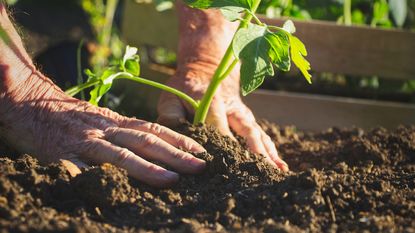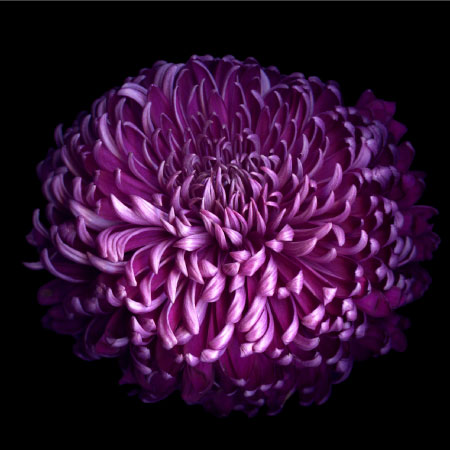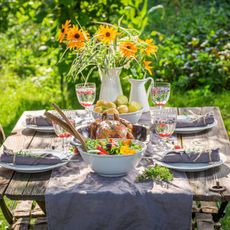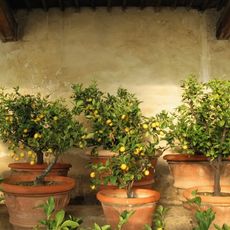Gardening With Heirloom Seeds


Lynn Coulter is the author of Gardening with Heirloom Seeds: Tried-and-True Flowers, Fruits & Vegetables for a New Generation (UNC Press). She writes for HGTV Gardens, The Travel Channel blog, and other publications and websites. Visit her at http://www.LynnCoulter.com.
I'm fascinated by stories about heirloom nasturtiums that -believe it or not"”glowed in the dark! That's according to a book called the Florist's Manual, published by Herman Bourne in 1833. There's also a dictionary of gardening from 1887 that refers to nasturtiums' ability to emit electrical sparks under certain atmospheric conditions. Did these little plants really twinkle, once upon a time? It sounds like a fairy tale now"”maybe another Jack the Beanstalk tale"”but it's fun to think about. For best results, grow your nasturtiums in cool weather. I love 'Cherry Rose,' which can be traced back to a Burpee seed list from the 1940s.
Sometimes you have to grow heirlooms from seeds, because starts are hard to find or unavailable, but 'Brandywine' tomatoes, which date to the 1880s, are still popular and easy to find. The plants get their name from Pennsylvania's Brandywine Creek, where they were once grown by Amish gardeners and farmers. This old-timey tomato is a big, beefsteak type, and it's delicious. By the way: I started my tomato seedlings in an empty tomato can, but soon discovered that the label took a beating from the sun and rain. If you try this, you might want to coat the can with a clear sealant before you start. Of course, your seedlings will soon need to be transplanted anyway, so you just can consider the can their temporary home and recycle it when they move out.
Many heirloom flowers are more willowy or "wildflowery" than newer flowers, and antique petunias, with their long, vining stems and small blooms, are no exception. Don't let that deter you. Some heirloom petunias have sweet scents, and they look delicate and downright charming when planted in hanging baskets and window boxes. For a more compact heirloom petunia, try 'Rose of Heaven,' which was popular in the 1930s.
I confess, I don't remember the name of this zinnia. That's why it's a good idea to label your images as soon as you make them! But there are so many gorgeous, old-fashioned zinnias to choose from, you won't have a problem finding one to grow. I love 'Benary's Giant,' first sold in the 1840s by a German seed company of the same name. The flowers come in many jewel-like colors, including red, orange, purple, yellow and clear pink. If you prefer daintier plants, try 'Lilliput,' which has pom pom-shaped blooms on stems that grow to just 18 inches tall. This old-timey zinnia dates to around 1910. When the growing season is finished, don't forget to save your heirloom seeds for planting again next year. Unlike most hybrids, they'll come back true to type, so you'll save money and carry on the tradition"”and fun"”of growing the same kinds of plants our grandparents grew. Save Save Save
Gardening tips, videos, info and more delivered right to your inbox!
Sign up for the Gardening Know How newsletter today and receive a free download of our most popular eBook "How to Grow Delicious Tomatoes."

Lynn Coulter is a guest writer for Gardening Know How. She is the author of the the book Gardening with Heirloom Seeds: Tried-and-True Flowers, Fruits & Vegetables for a New Generation
-
 How To Grow Garden To Table: A Guide For Home Cooks
How To Grow Garden To Table: A Guide For Home CooksWhat could be better than a meal that comes directly from garden to table? Show off your gardening and culinary skills with the very freshest food.
By Bonnie L. Grant
-
 Want a Backyard Mini Orchard? Create Your Own Container Orchard
Want a Backyard Mini Orchard? Create Your Own Container OrchardEasier to care for in small spaces, a backyard mini-orchard makes sense for busy gardeners and juicy fruit is the reward.
By Teo Spengler